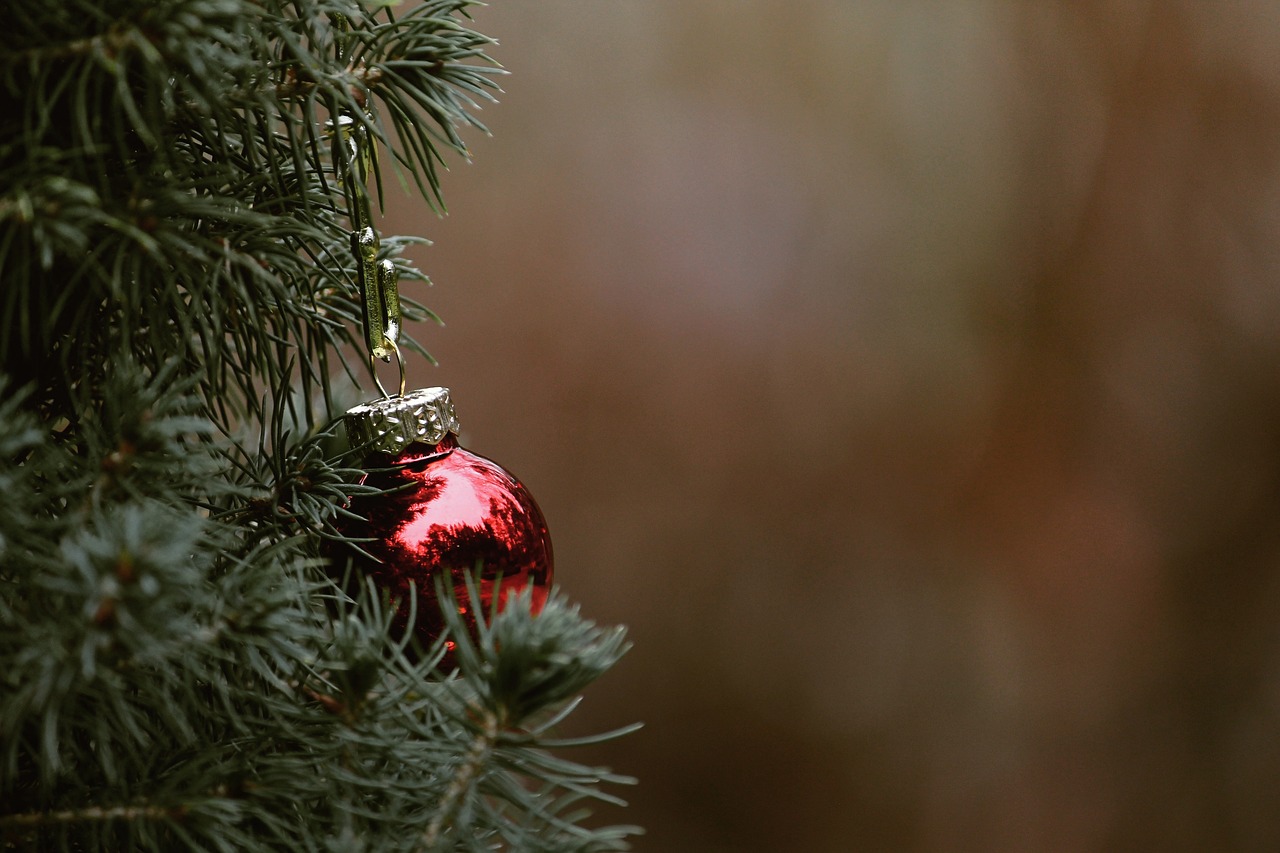The Christmas tree does have a religious meaning for many Christians. It symbolizes eternal life through Christ and serves as a reminder of the significance of Jesus’ birth. Additionally, various traditions associated with the tree reflect biblical themes.
Understanding the Christmas Tree’s Significance
The Christmas tree is a widely recognized symbol during the holiday season. While many people enjoy decorating trees as part of their festive celebrations, its origins are deeply intertwined with religious beliefs and traditions. The use of evergreen trees, in particular, dates back centuries and carries significant meaning in various cultures.

Evergreen trees remain green throughout the year, representing everlasting life. For Christians, this characteristic symbolizes the eternal life offered through faith in Jesus Christ. As such, the Christmas tree serves as a powerful reminder of hope and renewal during the winter months.
Historically, the tradition of using trees in winter celebrations dates back to ancient civilizations. Cultures such as the Egyptians, Romans, and Celts revered evergreens for their ability to withstand the harsh winter. They believed these trees possessed protective qualities and were often used in festivals to celebrate life and fertility.
In the Christian tradition, the Christmas tree became popular in the 16th century in Germany. It was during this time that it began to be decorated with candles, ornaments, and other decorations. The act of bringing a tree into the home was seen as a way to honor Christ and celebrate His birth.

The Symbolism Behind Decorations
Decorations on the Christmas tree also carry significant meaning. Each element can represent different aspects of Christian faith. For example:
- Lights: The lights on a Christmas tree symbolize Jesus as the light of the world. They remind believers of His arrival and the hope He brings.
- Star or Angel on Top: The star or angel that tops many Christmas trees represents the Star of Bethlehem or the angel who announced Christ’s birth to the shepherds.
- Ornaments: Ornaments can reflect personal stories or family memories, but they also signify gifts from God and the joy of giving.
- Garlands: Often made from popcorn, tinsel, or beads, garlands can represent the interconnectedness of all believers in Christ.
Variations Across Cultures
While the Christmas tree has strong roots in Christian tradition, its meaning can vary across different cultures. In some countries, families celebrate with unique customs that adapt the tree’s symbolism. Here are a few examples:
| Country | Customs | Symbolism |
|---|---|---|
| Germany | Decorated trees are placed in homes to celebrate Christmas. | The tree symbolizes eternal life and faith in God. |
| United States | Trees are often adorned with lights and ornaments representing family history. | The tree signifies sharing joy and love during the holiday season. |
| Italy | In addition to trees, nativity scenes are commonly displayed. | The focus is on celebrating Jesus’ birth through various traditions. |
The significance of the Christmas tree extends beyond its visual appeal. It encapsulates themes of hope, renewal, and community. As families gather around the tree to celebrate, it becomes a central point for creating cherished memories and reinforcing shared beliefs.

In summary, while many people enjoy the aesthetic and festive aspects of Christmas trees, their roots lie deeply within religious traditions. The symbolism associated with evergreen trees resonates with themes of everlasting life and faith in Jesus Christ. Understanding this context enriches the experience of decorating and celebrating with a Christmas tree each year.
The Evolution of the Christmas Tree Tradition
The tradition of the Christmas tree has evolved significantly over the centuries. While its roots can be traced back to ancient practices, the modern celebration has incorporated various cultural influences. This section will explore how the Christmas tree has transformed from a simple evergreen to a central emblem of holiday festivities.
Early Beginnings
The use of evergreens during winter solstice celebrations dates back to ancient civilizations. For example, the Egyptians used palm fronds to symbolize life during the winter months. Similarly, Romans celebrated Saturnalia with greenery as part of their festivities. These early practices laid the groundwork for what would eventually become the Christmas tree tradition.
In medieval Europe, the custom began to take on a more defined shape. The first known use of a Christmas tree in a home occurred in Germany around the 16th century. Families would bring a tree into their homes and decorate it with apples, nuts, and other edible items, symbolizing the bounty of nature and God’s gifts.

The Influence of Christianity
As Christianity spread throughout Europe, it began to influence various traditions, including those surrounding the Christmas tree. The tree became associated with Christian beliefs, particularly in Germany, where it was seen as a representation of Christ’s everlasting love and eternal life.
The practice of decorating Christmas trees with candles emerged during this period. Candles symbolized Jesus as the light of the world, illuminating the darkness of winter and sin. This custom brought families together, fostering a sense of community and celebration during the season.
Spread to Other Regions
The tradition of the Christmas tree gradually spread beyond Germany to other countries. By the 19th century, it had made its way to places like England and America. Queen Victoria and Prince Albert popularized the Christmas tree in England after they were depicted in a drawing published in 1848. This image showcased a decorated tree, capturing public interest and leading to widespread adoption.
In America, German settlers introduced the Christmas tree tradition in the 1700s. However, it did not gain widespread popularity until the mid-19th century when it became associated with family gatherings and holiday cheer.
Modern Decoration Trends
Today, the decoration of Christmas trees has become an artistic expression reflecting individual tastes and cultural influences. Common decorations include:
- Ornaments: These come in various shapes, sizes, and materials, often representing personal memories or family traditions.
- Lights: Electric lights have replaced candles for safety, but they continue to symbolize hope and joy during the season.
- Tinsel and Garland: These add sparkle and texture to trees, enhancing their visual appeal.
- Themed Trees: Many families choose specific themes for their trees, such as rustic, modern, or color-coordinated designs.
Cultural Variations in Tree Decoration
Cultural practices influence how trees are decorated around the world. Here are some unique customs associated with Christmas trees in different countries:
| Country | Decoration Style | Cultural Significance |
|---|---|---|
| Mexico | Trees are often adorned with traditional decorations such as papel picado (cut paper) and colorful ornaments. | This reflects vibrant culture and community celebrations during Las Posadas. |
| Philippines | Parol (star-shaped lanterns) are commonly hung around trees. | The parol symbolizes the Star of Bethlehem guiding people to Christ. |
| Australia | Christmas trees may incorporate beach-themed decorations such as seashells and surfboards. | This represents the summer holiday season during Christmas Down Under. |
These variations highlight how different cultures adapt the Christmas tree tradition to fit their unique customs and values. Regardless of how they are decorated or celebrated, Christmas trees continue to serve as a focal point for families during the holiday season.
The Christmas Tree and Its Connection to Christian Rituals
Beyond its decorative appeal, the Christmas tree plays a significant role in various Christian rituals and practices during the holiday season. This section will delve into how the Christmas tree is integrated into religious observances and the spiritual significance it holds for many believers.
The Advent Season
The Advent season, which begins four Sundays before Christmas, is a time of preparation and reflection for Christians. The Christmas tree can serve as a focal point during this period, symbolizing hope and anticipation for the birth of Christ. Many families use the tree as part of their Advent celebrations, incorporating it into daily rituals.
Some practices associated with the Advent season include:
- Advent Wreath: Often placed near the Christmas tree, an Advent wreath with four candles is lit each week. Each candle represents a theme, such as hope, peace, joy, and love.
- Daily Devotions: Families may gather around the tree to read scripture passages related to the nativity story. This practice reinforces the spiritual meaning of Christmas.
- Prayer and Reflection: The tree can be a space for prayer, allowing individuals to reflect on their faith and the significance of Jesus’ birth.
The Nativity Scene and Christmas Tree Synergy
In many homes, the Christmas tree shares space with a nativity scene. This dual display enhances the religious focus of the season. The nativity scene depicts the birth of Jesus and serves as a reminder of the true meaning of Christmas.
Combining these two symbols offers a visual representation of the Christmas story. For instance:
- Placement: The nativity scene is often positioned near the base of the tree, symbolizing that Jesus is at the heart of the celebration.
- Thematic Decorations: Ornaments may include symbols from the nativity story, such as angels, stars, and shepherds, reinforcing the connection between the tree and Christ’s birth.
Christmas Caroling and Tree Lighting Ceremonies
Caroling and tree lighting ceremonies are popular traditions that often incorporate a religious aspect. Many communities organize events where families gather to sing Christmas carols around a central tree. These carols frequently include songs that celebrate the birth of Jesus, creating an atmosphere of joy and reverence.
Tree lighting ceremonies can also serve as community gatherings that emphasize unity and faith. During these events, local churches may lead prayers, readings, or blessings to highlight the religious significance of the season.
The Symbolism of Tree Placement in Churches
In many churches, large Christmas trees are displayed prominently during the Advent and Christmas seasons. The positioning of these trees within worship spaces carries deep symbolism:
- Center of Worship: A tree placed at the front of the church signifies that Christ is central to worship and celebrations.
- Community Gathering: The tree acts as a unifying element, bringing congregants together for worship and fellowship.
- A Reminder of Christ’s Light: The lights adorning the church tree symbolize Christ as the light that overcomes darkness.
Educational Programs and Children’s Activities
The Christmas tree can also serve an educational purpose within churches and religious communities. Many programs designed for children use the tree to teach important lessons about faith and tradition. Activities may include:
- Crafts and Decorations: Children can create ornaments that represent biblical stories or themes related to Christmas.
- Bible Lessons: Sunday school classes may incorporate lessons about the significance of Christmas trees in relation to Jesus’ birth.
- Service Projects: Some communities encourage children to donate ornaments or gifts that can be hung on community trees or given to those in need.
By using the Christmas tree as a teaching tool, religious communities reinforce its significance while engaging children in meaningful ways. This approach nurtures a sense of belonging and connection to their faith during the festive season.
The Role of the Christmas Tree in Contemporary Society
As society evolves, so does the meaning and significance of the Christmas tree within various communities. While its roots remain deeply embedded in Christian traditions, the Christmas tree has become a universal symbol of the holiday season for many people, regardless of their religious beliefs. This section explores the modern-day relevance of Christmas trees, including their role in cultural celebrations, social gatherings, and personal reflection.
A Symbol of Togetherness
In today’s fast-paced world, the Christmas tree serves as a reminder of togetherness and family unity. The act of gathering around a decorated tree fosters an atmosphere of love and connection. Families often share stories, exchange gifts, and create lasting memories while spending time together during this joyful season.
Additionally, many communities host events centered around Christmas trees, such as:
- Community Tree Lightings: These events bring together residents to celebrate the start of the holiday season with music, food, and fellowship.
- Charitable Drives: Trees are often used as collection points for toys, food, or clothing donations for those in need, emphasizing the spirit of giving.
- Festive Markets: Many towns feature Christmas markets where local vendors sell handmade ornaments and decorations, further enhancing community bonding.
The Tree as a Canvas for Personal Expression
Today, many individuals and families view their Christmas trees as a canvas for personal expression. Customization varies widely, from choosing specific themes and color palettes to incorporating unique ornaments that reflect personal stories or interests.
Some popular trends include:
- Eco-Friendly Decorations: Many people are opting for sustainable materials and reusable ornaments to minimize environmental impact.
- Memory Trees: These trees feature ornaments that represent significant life events, such as weddings or births, allowing families to reflect on their journey together.
- Interactive Elements: Some families include activities related to each ornament, turning decoration into a fun and meaningful event.
The Influence of Social Media
The rise of social media has also transformed how people share their Christmas tree experiences. Platforms like Instagram and Pinterest are filled with inspiration for tree decoration, showcasing creative ideas from around the world. This sharing cultivates a sense of community, as individuals connect over their unique approaches to holiday decor.
Social media campaigns often highlight themes such as:
- Diversity in Celebration: Users share how different cultures celebrate Christmas, showcasing various tree styles and traditions.
- DIY Projects: Many people post tutorials on creating homemade decorations, encouraging others to engage in craft activities.
- Charitable Initiatives: Social media is used to promote charitable events related to Christmas trees, amplifying community outreach efforts.
Conclusion
The Christmas tree has transcended its origins to become a multifaceted symbol of joy, hope, and community during the holiday season. Its religious significance remains important for many Christians who view it as emblematic of eternal life through Christ. However, its broader cultural implications allow individuals and families from all backgrounds to embrace the spirit of the season.
From ancient traditions to modern celebrations, the Christmas tree continues to evolve while retaining its core messages of love, togetherness, and reflection. Whether adorned with religious symbols or personal mementos, each tree tells a unique story that resonates with those who gather around it. Ultimately, the Christmas tree serves as a beautiful reminder of the values we cherish during this special time of year—unity, generosity, and the warmth of shared experiences.
